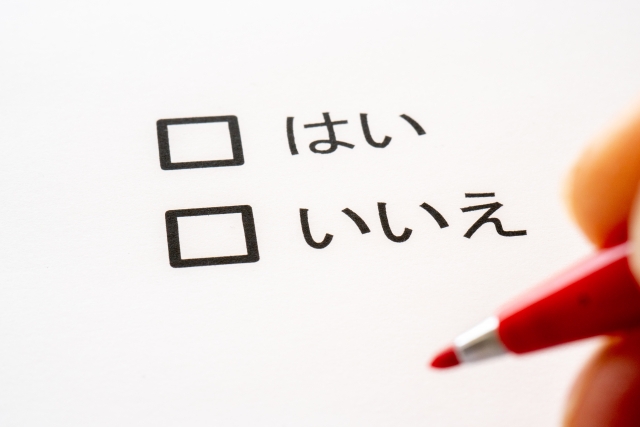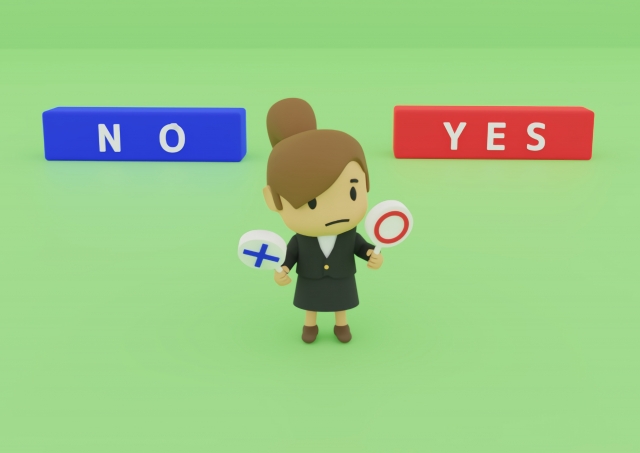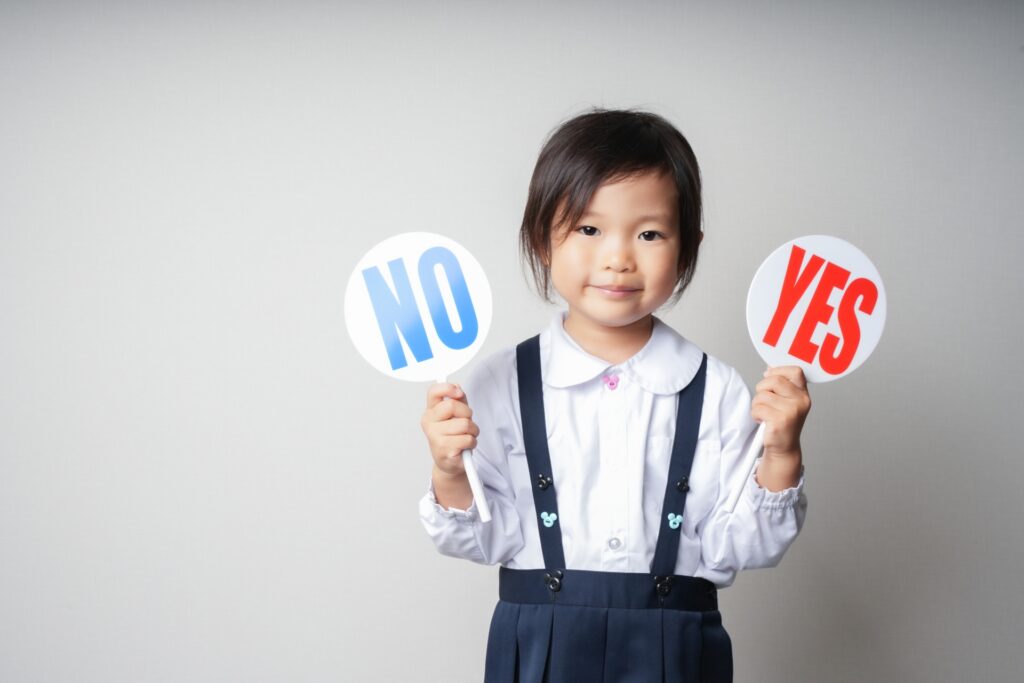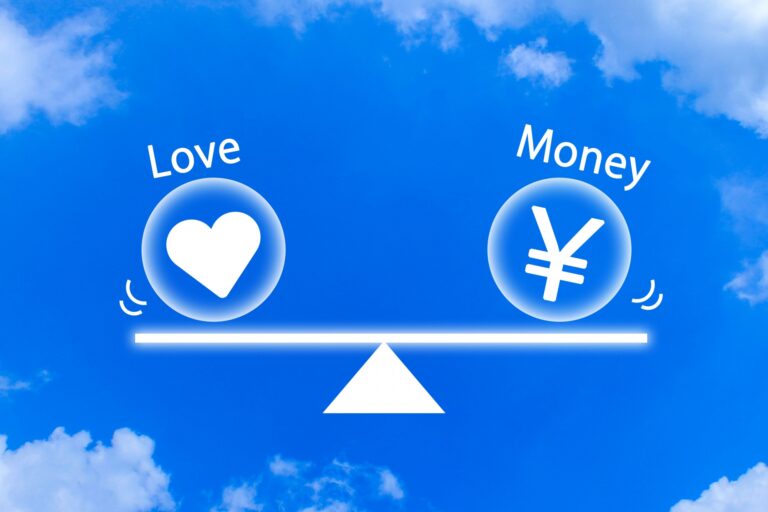I am sure that people working in Japan or students who come to Japan to study are studying Japanese language everyday to learn it.
However, many of them may be struggling with the same word but with different meanings, or with grammar that is completely different from that of their native language.
In particular, the usage of “yes (hai)” and “no (iie)” or even “OK” in various contexts is one of the most difficult Japanese words to learn.
In this article, we would like to explain such usage of “yes” and “no” in Japanese and the difference between “yes” and “no” in English.

If you are looking for face-to-face or online Japanese lessons with the best Japanese tutors, please check here.
Contents
The meanings of “Hai” in Japanese and “YES” in English
Let us first raise the usage of “Hai”.
It is basically the same as the English “YES,” but the meaning may change depending on the content of the other party’s question.
For example, in the case of the Japanese “Hai,” “Is she here yet?” is used to affirm “Yes, she is not here yet(はい、まだ来ていません。)” when asked in the negative form.
In English, instead of using “yes,” one uses “No, she hasn’t.” to completely deny the question.
Many foreign nationals who are learning Japanese are confused by this use of “Hai.
In short, “Hai” is used when you agree with a question.
If you disagree with the question, you use “no.
In Japanese, the focus is always on the person with whom you are speaking, and the way you answer depends on whether you agree with that person or not.
In English, “yes” and “no” are used depending on whether the answer to the question is affirmative or negative.
If you can understand this difference, you will be less likely to become confused.
Of course, it will take some time to get used to it, but gradually you will be able to use them naturally.
The meaning of “Iie” in Japanese and “No” in English
No” is used in the same way when you disagree with someone’s question.
In movies, “no” is used when the answer is negative, whereas in Japanese, “no” is used when you disagree with the question.

Examples of differences between Japanese and English
To master the use of “Hai” and “Iie,” it is ideal to understand the aforementioned mechanisms, but it is also recommended to immerse yourself in the language you actually use.
Here are some examples of common phrases used in daily conversation.
Do you dislike meat?
Japanese affirmation: No. I like it. (いいえ、好きです。)
English affirmative: Yes.
Negative in Japanese: Yes, I don’t like it very much. (はい、あまり好きではありません。)
Negative in English: No. I don’t.
Can’t you see the sign?
Japanese affirmative: No. I can see it. (いいえ、見えますよ。)
English affirmative: Yes.
Japanese negative: Yes, I can’t see it. (はい、見えません。)
Negative in English: No. I can’t.
You are not American, are you?
Japanese affirmation: No, I am American. (いいえ、私はアメリカ人です。)
English affirmative: Yes.
Japanese negative: Yes, I am not American. (はい、アメリカ人ではありません。)
English negative: No.I’m not
“Hai” meaning YES, is also used in reply.
Basically, “Hai” is used to make a decision in response to a question, but many Japanese people naturally use this word in “conversational reply” (2).
In such cases, “Hai” does not include the meaning of “YES,” but is more like a simple “I’m listening to what you have to say.
For example, when someone says to you, “Mr. XX, I have some materials for today’s meeting, 「○○さん、今日の会議の資料なんだけどさ」” you can say, “Yes, what is it? 「はい、なんでしょう。」” When the content of the meeting has not yet been clearly presented, it is used in the same way as “Yes, what is it?
Even in situations where the content has not yet been clearly presented, there is a habit of using the word “Hai”. Hai douzo and hai genki desu in Japanese are commonly used phrases.
If you are in a position to look the other person in the eye and listen to what he or she has to say without speaking, for example, you may be perceived as not being “polite” in Japan.
When the other person speaks (especially if he or she is speaking to a superior), use “Hai” instead of “Iie” to indicate that you are listening.

Japanese nationals do not say “Iie” very often.
It may come as a surprise to foreign nationals, but Japanese people tend not to use “No,” or “Iie” very often.
Why? Some people may be surprised at this, but it is because Japanese people tend to give too much consideration to the possibility of giving the other person a bad feeling. Japanese people tend to give too much consideration to the possibility of giving the other person an aversion to their words.
Even in situations where common sense would dictate a firm “No, it’s not like that,” they do not deny it outright, saying something like “Well, I don’t know.
This tendency often appears not only in private but also in business situations, which may irritate some people until they get used to it.
Although young people (in their 20s and early 30s) in recent years have come to use the word “Iie” relatively clearly, people over 35 (especially those in their 40s and older) often do not use “Iie” very often because they do not like conflict with others.
Conclusion
In this article, we have explained the usage of “yes” and “no” in Japanese and the difference between “yes” and “no” in English.
The usage of “yes” and “no” in Japanese is sometimes different from that of “yes” and “no” in English.
It is very complicated, but we urge you to understand how it works and become familiar with its usage.
Related article:










